What is the history of Chapala and Ajijic, Mexico?
Thomas Hellyer - Chapala Home Sales
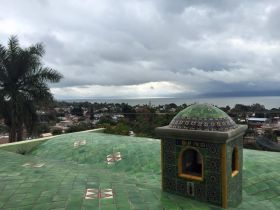 Chapala and Ajijic is an area of Mexico that has been inhabited for hundreds of years and it makes sense because there is a lot of water here and you can grow anything. It is an obvious place where natives would congregate and live in by growing food and fishing. The climate is great. There is a very long history of native Mexican settlements here. When Lake Chapala has gone down some, they found thousands of artifacts in the mud along the lakeshore. They found pottery, arrowheads,...
Chapala and Ajijic is an area of Mexico that has been inhabited for hundreds of years and it makes sense because there is a lot of water here and you can grow anything. It is an obvious place where natives would congregate and live in by growing food and fishing. The climate is great. There is a very long history of native Mexican settlements here. When Lake Chapala has gone down some, they found thousands of artifacts in the mud along the lakeshore. They found pottery, arrowheads,... Chapala and Ajijic is an area of Mexico that has been inhabited for hundreds of years and it makes sense because there is a lot of water here and you can grow anything. It is an obvious place where natives would congregate and live in by growing food and fishing. The climate is great. There is a very long history of native Mexican settlements here. When Lake Chapala has gone down some, they found thousands of artifacts in the mud along the lakeshore. They found pottery, arrowheads, etc.
Chapala and Ajijic is an area of Mexico that has been inhabited for hundreds of years and it makes sense because there is a lot of water here and you can grow anything. It is an obvious place where natives would congregate and live in by growing food and fishing. The climate is great. There is a very long history of native Mexican settlements here. When Lake Chapala has gone down some, they found thousands of artifacts in the mud along the lakeshore. They found pottery, arrowheads, etc. The Spaniards conquered the area of Chapala and Ajijic 500 years ago or so and set up their missions. There is a really cool island here called the Island of Mezcala, where an Indian rebellion happened and lasted for at least 6 years and where the Spaniards never conquered the Indians. The Spaniards brought in builders from the coast and built ships that could attack Mezcala but they were never successful, so they finally had to do a treaty with the natives. I believe that was one of the only parts of Mexico that wasn’t actually conquered by Spaniards.
In the late 1800s, Lake Chapala was quite a popular place for Mexicans from Mexico City to come including Porfirio, the dictator president at that time. The first foreigners didn’t start to come here until the late 20s or 30s. It was mostly adventurers and artists who come to Chapala and Ajijic so it became an artist colony in the 50s. It has slowly attracted more and more foreigners since then. As the roads improve and the travel time from Guadalajara became less, Chapala and Ajijic became a weekend and a holiday getaway for the residents of Guadalajara (about an hour away) who wanted to get out of the city. The first boom of foreigners was just in the 90s ad 2000s.
(Steeple in Ajijic with view of Lake Chapala, Ajijic, Mexico, pictured.)
Posted January 28, 2016
Anne Dyer - Casita Montana
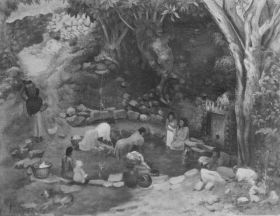 A lot has changed in Chapala and Ajijic. It was just a little artist and fishing village 29 years ago. The Mexican ladies were scrubbing their clothes on rocks in Lake Chapala, which is four blocks away from where my place is located. That doesn’t happen anymore as Chapala is growing constantly. It is just a little sleepy Mexican art village, more or less.
A lot has changed in Chapala and Ajijic. It was just a little artist and fishing village 29 years ago. The Mexican ladies were scrubbing their clothes on rocks in Lake Chapala, which is four blocks away from where my place is located. That doesn’t happen anymore as Chapala is growing constantly. It is just a little sleepy Mexican art village, more or less. Chapala is just an hour away by car from, which has a population of 7 million people. The...
 A lot has changed in Chapala and Ajijic. It was just a little artist and fishing village 29 years ago. The Mexican ladies were scrubbing their clothes on rocks in Lake Chapala, which is four blocks away from where my place is located. That doesn’t happen anymore as Chapala is growing constantly. It is just a little sleepy Mexican art village, more or less.
A lot has changed in Chapala and Ajijic. It was just a little artist and fishing village 29 years ago. The Mexican ladies were scrubbing their clothes on rocks in Lake Chapala, which is four blocks away from where my place is located. That doesn’t happen anymore as Chapala is growing constantly. It is just a little sleepy Mexican art village, more or less. Chapala is just an hour away by car from, which has a population of 7 million people. The airport is a 30-minute drive away from Chapala so it is easy to fly in and out to any place. When I came here 29 years ago, Chapala only had a two-lane road to Guadalajara.
However, the population is still small around the whole area. There are several little villages that are clustered together here in Chapala. In the high season, there are probably about 50,000 to 70,000 people here. In the low season (the hot months), there is less but in our little Ajijic village, the population sign that I see on the highway says 10,000.
Over the years, people come here for just a couple of months just like I did 29 years ago. I came down here for two months and wound up staying. Here I am! People come down and just fall in love with the place and the Mexican people are so kind and so sweet.
Our lives are busy and full. If it feels right, you just stay. Most of the people who came here years ago were in their 60s but now it’s changing. We now see younger people coming in. Older senior citizens are also coming in. When you come in your 60s you never know what will happen. You might miss your grandchildren in the States or your partner passes away and you go back and forth. So it is a life adventure to come here to Chapala, so to speak. Some people come and stay like I have, and some people come for two years or ten years and they go back to the States when they feel that it is time to go back. It changes with time.
(Ann Medalie: “Washing Clothes in Ajijic”; illustration from Modern Mexico, October 1945, available from Sombereo Books, pictured.)
Posted August 18, 2016
Juan Eufracio Marquez Flores - LM&A Immigration and Legal Services
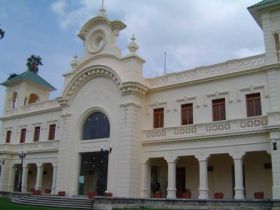 In 1879, it was recommended to Septimus Crow (who was an official from the British Embassy) to come to Chapala to use the minerals in our hot springs for an illness. Septimus Crow was the first foreigner who arrived in Villa Montecarlo, at what is now Hotel Montecarlo. In that area he built a villa. After him, many other foreigners started to come and built many houses on the shore of the lake. Almost one year after, Hotel Arzapalo was built, which is now where is the City...
In 1879, it was recommended to Septimus Crow (who was an official from the British Embassy) to come to Chapala to use the minerals in our hot springs for an illness. Septimus Crow was the first foreigner who arrived in Villa Montecarlo, at what is now Hotel Montecarlo. In that area he built a villa. After him, many other foreigners started to come and built many houses on the shore of the lake. Almost one year after, Hotel Arzapalo was built, which is now where is the City... In 1879, it was recommended to Septimus Crow (who was an official from the British Embassy) to come to Chapala to use the minerals in our hot springs for an illness. Septimus Crow was the first foreigner who arrived in Villa Montecarlo, at what is now Hotel Montecarlo. In that area he built a villa. After him, many other foreigners started to come and built many houses on the shore of the lake. Almost one year after, Hotel Arzapalo was built, which is now where is the City Hall.
In 1879, it was recommended to Septimus Crow (who was an official from the British Embassy) to come to Chapala to use the minerals in our hot springs for an illness. Septimus Crow was the first foreigner who arrived in Villa Montecarlo, at what is now Hotel Montecarlo. In that area he built a villa. After him, many other foreigners started to come and built many houses on the shore of the lake. Almost one year after, Hotel Arzapalo was built, which is now where is the City Hall. Porfirio Diaz, the president of Mexico for several decades, used to come to vacation to Lake Chapala. When Septimus Crow built his villa, many other houses along the shore all the way to where is the Malecon in Chapala from the Montecarlo were constructed around 1879, which is when the foreigners started to come to Chapala.
Up to the 1860s, Chapala was very popular. In this period many rich people from Mexico City, foreigners, and ambassadors used to come to Chapala. And then there was the train station. There was another Norwegian who came and built a casino and started the train station where it’s located in the Museum Gonzales Gallo in Chapala. And you will see on the second floor there will be pictures of this Norwegian who came here and tried to build a business. There was another casino building. I’m writing this so that the readers know that the native people like me were used to foreigners to come in this area because foreigners were coming since the 1879.
Ajijic started to be popular around the 1940s and 1950s, when foreigners came and established here. Since then it’s become more and more popular.
In the 1960s where today is the Lake Chapala Society, there was the lady who made a donation the house. She was very famous and used to work for National Geographic. This woman was one of the ones who promoted Ajijic to their contacts or friends.
Michael Eager had built and run La Posada as one of the few, main foreigner families that established here in Ajijic. They built a hotel and promoted the area, which brought in a lot of people.
Arzapalo was the first hotel. And then there was another hotel, Nido.
And then there’s another foreigner who came here, Alberto Braniff, who was the first foreigner who flew in Mexico. Braniff built a villa that now is Restaurante Cazadores. The house next to the main church with the Victorian architecture was constructed by Alberto Braniff. There is a statue in the international airport in Mexico City of Braniff honoring the pioneers of the Mexican aeronautics.
(Museum Gonzales Gallo, Chapala, Mexico, pictured.)
Posted November 7, 2016
Jeff Smith - DocTours
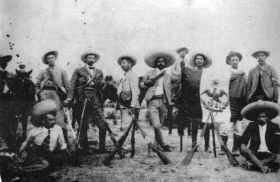 To teach myself Spanish, I read the Mexican encyclopedia. Then when I went to talk Mexican history with people, I found I was way over-educated. I won't try to squeeze in all that here. I'll just pass on one factoid that sticks in my mind. A hundred years ago during the Mexican Revolution, the Mexican Army and the rebel armies (Villa & Zapata) all together killed as many as one out of every six Mexicans. Fleeing that slaughter is what started the Mexican exodus. Any specific...
To teach myself Spanish, I read the Mexican encyclopedia. Then when I went to talk Mexican history with people, I found I was way over-educated. I won't try to squeeze in all that here. I'll just pass on one factoid that sticks in my mind. A hundred years ago during the Mexican Revolution, the Mexican Army and the rebel armies (Villa & Zapata) all together killed as many as one out of every six Mexicans. Fleeing that slaughter is what started the Mexican exodus. Any specific... To teach myself Spanish, I read the Mexican encyclopedia. Then when I went to talk Mexican history with people, I found I was way over-educated. I won't try to squeeze in all that here. I'll just pass on one factoid that sticks in my mind. A hundred years ago during the Mexican Revolution, the Mexican Army and the rebel armies (Villa & Zapata) all together killed as many as one out of every six Mexicans. Fleeing that slaughter is what started the Mexican exodus. Any specific questions, I'd be happy to answer.
To teach myself Spanish, I read the Mexican encyclopedia. Then when I went to talk Mexican history with people, I found I was way over-educated. I won't try to squeeze in all that here. I'll just pass on one factoid that sticks in my mind. A hundred years ago during the Mexican Revolution, the Mexican Army and the rebel armies (Villa & Zapata) all together killed as many as one out of every six Mexicans. Fleeing that slaughter is what started the Mexican exodus. Any specific questions, I'd be happy to answer. (Emilliano Zapata, Lake Chapala, Mexico, pictured.)
Posted February 13, 2017
steve iman
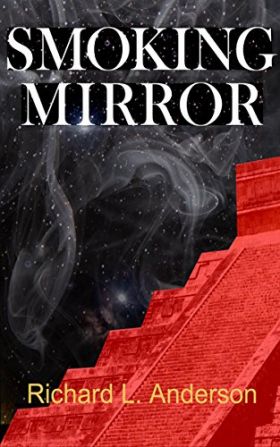 Richard Anderson wrote a novel by the name of Smoking Mirror which is available on Amazon. The historical adventure allows Orlando d Bolonia off the steamy coast of Vera Cruz ten years after the Conquest as he walks around Mexico as a Franciscan friar. It’s a bit of a fantasy, but the author does a fair job of trying to identify native structures along the rim of the lake as Bolonia built the church in town and the small building atop the hill. There are other novels focusing on...
Richard Anderson wrote a novel by the name of Smoking Mirror which is available on Amazon. The historical adventure allows Orlando d Bolonia off the steamy coast of Vera Cruz ten years after the Conquest as he walks around Mexico as a Franciscan friar. It’s a bit of a fantasy, but the author does a fair job of trying to identify native structures along the rim of the lake as Bolonia built the church in town and the small building atop the hill. There are other novels focusing on... Richard Anderson wrote a novel by the name of Smoking Mirror which is available on Amazon. The historical adventure allows Orlando d Bolonia off the steamy coast of Vera Cruz ten years after the Conquest as he walks around Mexico as a Franciscan friar. It’s a bit of a fantasy, but the author does a fair job of trying to identify native structures along the rim of the lake as Bolonia built the church in town and the small building atop the hill. There are other novels focusing on area history from past centuries worth exploring.
Richard Anderson wrote a novel by the name of Smoking Mirror which is available on Amazon. The historical adventure allows Orlando d Bolonia off the steamy coast of Vera Cruz ten years after the Conquest as he walks around Mexico as a Franciscan friar. It’s a bit of a fantasy, but the author does a fair job of trying to identify native structures along the rim of the lake as Bolonia built the church in town and the small building atop the hill. There are other novels focusing on area history from past centuries worth exploring. (Cover of the novel Smoking Mirror by Richard Anderson, pictured.)
Posted February 19, 2017
Mark Eager - Eager & Asociados
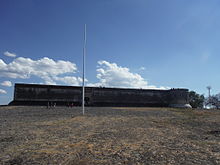 The Spaniards came to Mexico and tried to take over our little area here. They were held off on Mezcala Island by a group of Mexicans who banded together and fought the Spaniards. The Spaniards finally gave up, backed off, and reached the treaty agreement with the Mexicans. The Spaniards thought if they started bringing in Catholicism into Mexico, the Mexicans would gradually accept Spanish rule. That’s basically what happened in Lake Chapala. Before that, there were a lot of...
The Spaniards came to Mexico and tried to take over our little area here. They were held off on Mezcala Island by a group of Mexicans who banded together and fought the Spaniards. The Spaniards finally gave up, backed off, and reached the treaty agreement with the Mexicans. The Spaniards thought if they started bringing in Catholicism into Mexico, the Mexicans would gradually accept Spanish rule. That’s basically what happened in Lake Chapala. Before that, there were a lot of... The Spaniards came to Mexico and tried to take over our little area here. They were held off on Mezcala Island by a group of Mexicans who banded together and fought the Spaniards. The Spaniards finally gave up, backed off, and reached the treaty agreement with the Mexicans. The Spaniards thought if they started bringing in Catholicism into Mexico, the Mexicans would gradually accept Spanish rule. That’s basically what happened in Lake Chapala. Before that, there were a lot of indigenous Indians who spoke a bunch of different native languages, but weren’t speaking Spanish.
The Spaniards came to Mexico and tried to take over our little area here. They were held off on Mezcala Island by a group of Mexicans who banded together and fought the Spaniards. The Spaniards finally gave up, backed off, and reached the treaty agreement with the Mexicans. The Spaniards thought if they started bringing in Catholicism into Mexico, the Mexicans would gradually accept Spanish rule. That’s basically what happened in Lake Chapala. Before that, there were a lot of indigenous Indians who spoke a bunch of different native languages, but weren’t speaking Spanish. Chapala has an old train station that was built in the 1920’s to bring people out from Guadalajara to visit Lake Chapala, which was during the heydays of Chapala. Ajijic at that time was a dirt street with twelve homes.
Chapala was famous before Ajijic. Where we are right now in the general area of Ajijic is a municipality of Jocotepec. From further up the highway where the big sign is, you get into the municipality of Chapala, and that branches all the way to around the lake and covers a lot of areas.
The major part of Mexico’s history is that Mexicans defended Mexico against the Spaniards and won. If you go into Mezcala Island (next to Scorpion Island, 30-40 minutes to the east from Chapala,) you will see some of the structures- the hospitals and the churches that the Spaniards built in the 1500’s – 1600’s.
Mezcala Island a hidden treasure where a museum is being set up. You can rent a boat for 450 pesos and take 10 people out to Mezcala Island on a 15-minute boat ride. There are no professional tour guides to take you around Mezcala Island, but there’s a guy and a kid who will take you around and tell you their story on Mezcala Island. The history of Mezcala Island is just amazing because Mexico defended itself and all the Spaniards, with all their money, armature and equipment couldn’t get past the five leaders and 500 soldiers of the island.
There’s a museum in Mezcala, too. If you get on to Mezcala Island, you’ll see plates with English and Spanish prints giving the history of Mezcala Island. Mezcala Island used to be a prison, a fortress, a hospital, and many other things.
Chapala grew, and then the Mexicans built the old train station and had paddle wheelers on the lake, two of which were built in either Germany or Switzerland and were sent to Mexico and put together until they finally broke down. There were trains coming out of Guadalajara right to the old train station in Chapala. When the boom took off, wealthy Europeans and Americans lived in Chapala and Ajijic, and branched off over the years.
The 50’s to the 60’s was when the laid-back gringos and hippies started coming to Chapala. People who loved artwork discovered this little town of Ajijic, and that was our beginning. Ajijic was all of three blocks this way and three blocks down towards the lake, and that was it. I came to Ajijic when I was 15 or 16 years old. At that time, I could drive any way I wanted to on any street at 400 miles an hour and nobody would say anything to me. The villagers were laid-back even at that time.
(The Fort or presidio of Mexcala Island, near Chapala, Mexico, pictured.)
Posted May 18, 2017



.png)